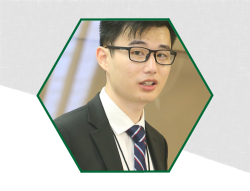Dicing is one of the main processes during the packaging of semiconductors and the fabrication of electronic devices. As the design of semiconductor chips and electronic devices has become more complex over the years, conventional fabrication methods like saw-dicing present limitations regarding precision, flexibility, and quality. In this study, we present an ultrafast laser based dicing technique for cutting epoxy molding compound with fused silica filler of two different sizes of 32 microns and 55 microns. A three-dimensional two-temperature model (3D-TTM) was used to explore a wide range of process parameters of the dicing process with validation from the experiments using a femtosecond laser. The effect of the process parameters on the efficiency and ablation profile was systematically studied. The effect of the fused silica filler size on the heat transfer and ablation behavior was also discussed in detail. One of the key novelties of the presented work is that the 3D-TTM can be used to find the optimal cutting conditions beyond the capability of the experimental setup. In this study, the 3D-TTM was also used to predict the optimal parameters for a picosecond laser of a different beam wavelength. The study shows that finding the optimal parameters using the 3D-TTM is more effective and lower cost than experimental methods. The study also illustrates the unique advantage of the ultrafast laser based dicing method, making it a technique with huge potential in the fabrication of next-generation semiconductor chips and electronic devices.
Keywords
- Dicing
- Electronic Packaging
- Micromachining
- Modeling
- Ultrafast Laser

